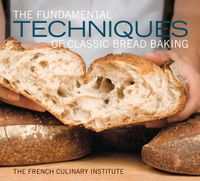Advertisement
Other Leavening Agents
Appears in
Leavening in bread and pastry making occurs with any of three elements: air, steam, and carbon dioxide. These can be produced mechanically, chemically, or biologically; used alone or in combination; and each will expand substantially when heated. Air trapped in a dough or batter will expand to several times its size when heated. Liquid in a mix will turn to steam when heated and, when it does, expand to eleven hundred times its original volume. Carbon dioxide is formed when a chemical agent, such as baking powder, creates gases during baking, which in turn cause a dough to rise. Other ingredients (usually some combination of flour, sugar, and eggs) incorporated into the mixture solidify when baked and become a mass that will retain its expanded form once removed from the heat source.

